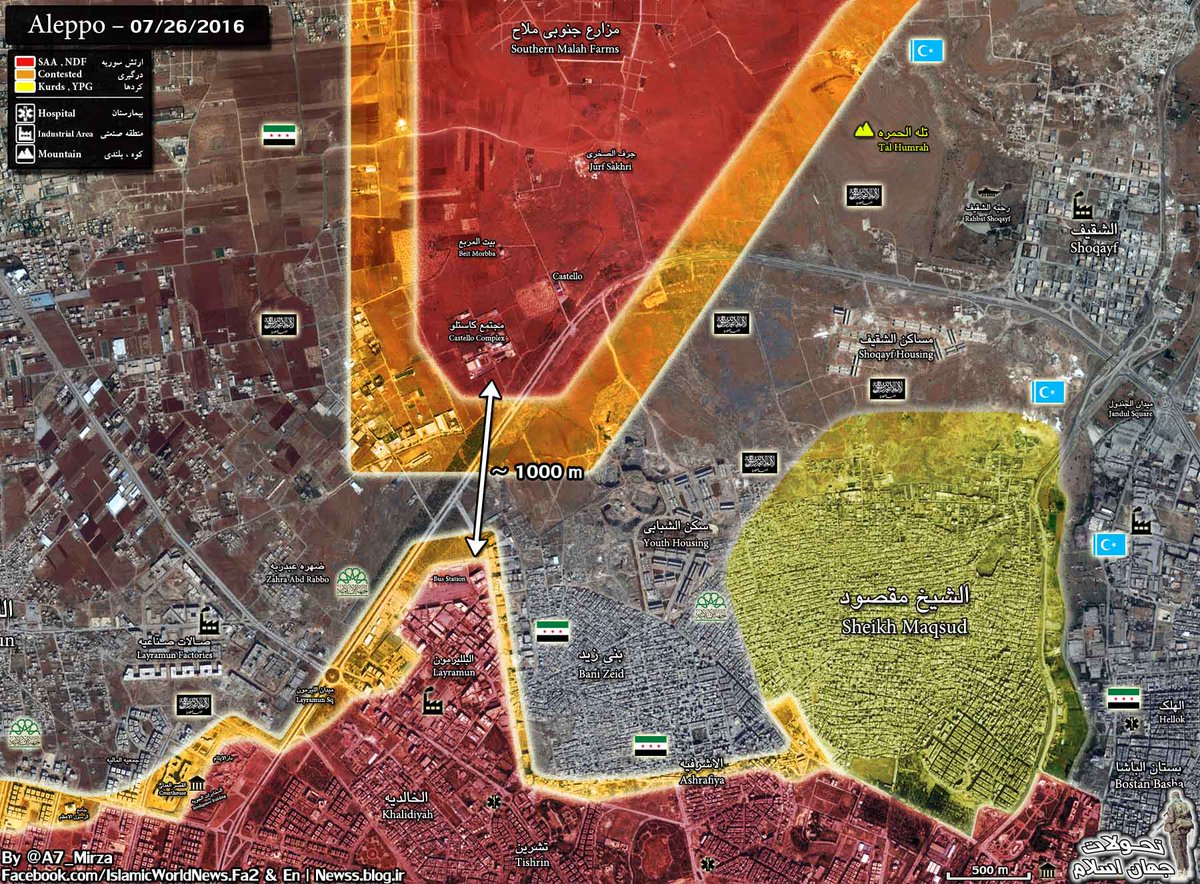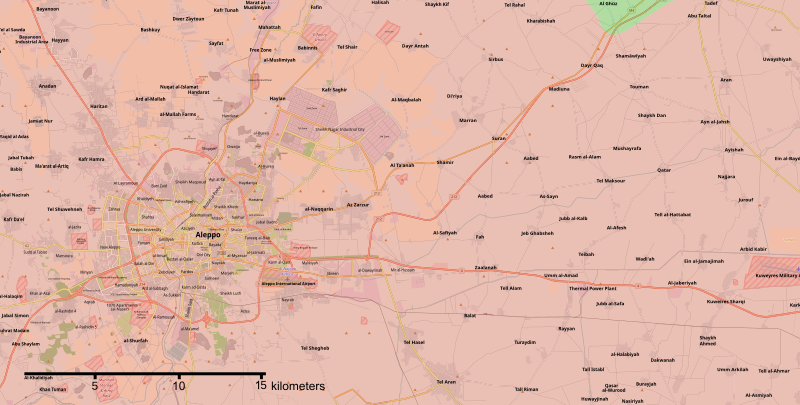Yazata
Valued Senior Member
The small city of Manbij was surrounded by SDF (Kurdish) fighters in mid June. Apparently a large force (reportedly several thousand, though I suspect that number may be exaggerated) of ISIS fighters was trapped there. Fighting to take the town has been intense ever since.
ISIS has repeatedly launched large attacks eastward towards Manbij from the vicinity of Al Bab, and from the north and south, in hopes of breaking through. Many small villages have changed hands repeatedly. And the surrounded ISIS fighters in Manbij have repeatedly tried to break out. The SDF has successfully fought off those attempts (at considerable cost) and have penetrated the town. After prolonged fighting they managed to cut the defenders into two groups, a smaller group in western Manbij and a larger group still holding most of the east side of town. The smaller western group has subsequently been mostly eliminated, many of them escaping to join the eastern group, while some die-hards hold out in a fortress-like prison.
ISIS had been using the town's hospital as their command center and supply point, but the SDF has finally taken that strong point after tough fighting. But the US Central Command thinks that the ISIS fighters can continue to hold out for a considerable time to come. There are US and French special forces on scene, probably serving as forward air controllers for coalition air strikes. The US Central Command says that the fighting in Manbij has been unlike anything yet seen in the war against ISIS, very different than the recent battle to retake Fallujah.
I'm thinking that it's possible that this might turn out to be one of the landmark battles of the war. A significant fraction of ISIS' fighters may be involved and the Islamic State's contact with the outside world through the Turkish border is at stake. Losing here will be a significant setback for the jihadists.
https://en.wikipedia.org/wiki/Manbij_offensive_(2016)
ISIS has repeatedly launched large attacks eastward towards Manbij from the vicinity of Al Bab, and from the north and south, in hopes of breaking through. Many small villages have changed hands repeatedly. And the surrounded ISIS fighters in Manbij have repeatedly tried to break out. The SDF has successfully fought off those attempts (at considerable cost) and have penetrated the town. After prolonged fighting they managed to cut the defenders into two groups, a smaller group in western Manbij and a larger group still holding most of the east side of town. The smaller western group has subsequently been mostly eliminated, many of them escaping to join the eastern group, while some die-hards hold out in a fortress-like prison.
ISIS had been using the town's hospital as their command center and supply point, but the SDF has finally taken that strong point after tough fighting. But the US Central Command thinks that the ISIS fighters can continue to hold out for a considerable time to come. There are US and French special forces on scene, probably serving as forward air controllers for coalition air strikes. The US Central Command says that the fighting in Manbij has been unlike anything yet seen in the war against ISIS, very different than the recent battle to retake Fallujah.
I'm thinking that it's possible that this might turn out to be one of the landmark battles of the war. A significant fraction of ISIS' fighters may be involved and the Islamic State's contact with the outside world through the Turkish border is at stake. Losing here will be a significant setback for the jihadists.
https://en.wikipedia.org/wiki/Manbij_offensive_(2016)
Last edited:









